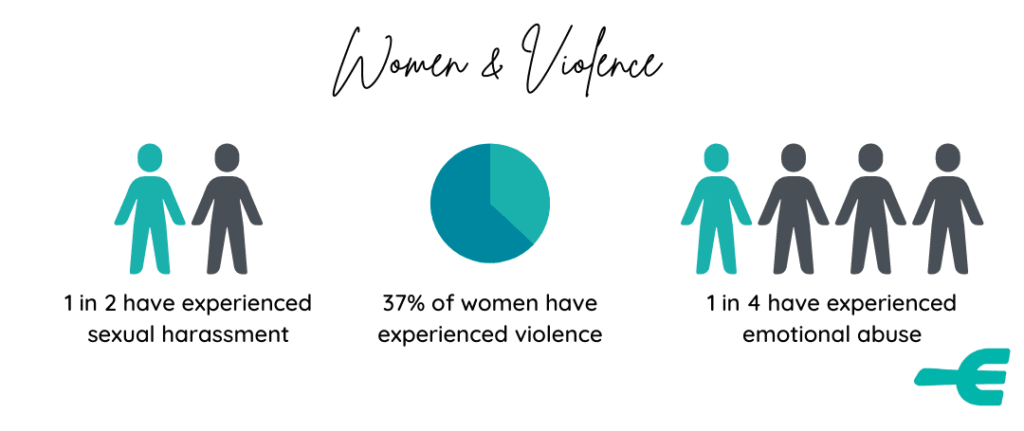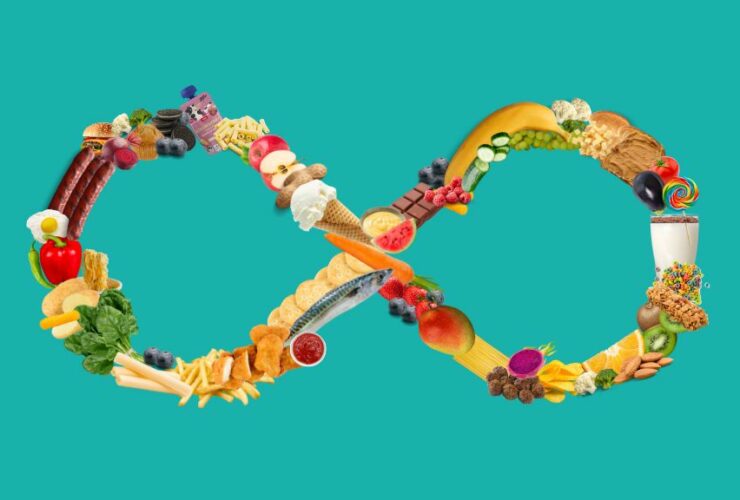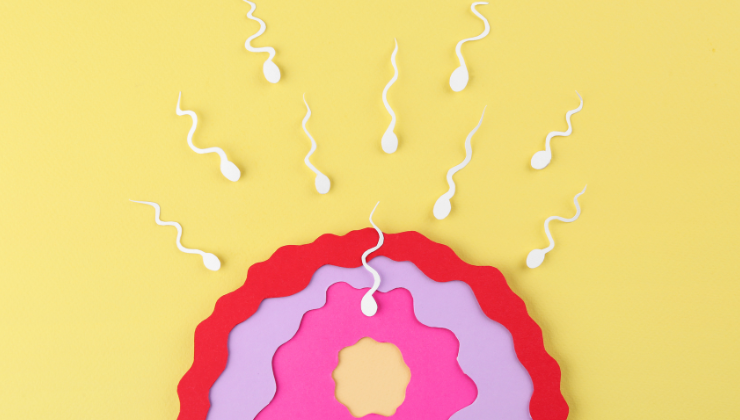Women’s Health – An Overview
This week (5-11th September) marks Women’s Health week and we wanted to cover some pretty big topics on the matter. Women’s health is quite broad. Are we talking about periods? Fertility? Weight loss? Eating disorders? Menopause? Cis-Het females? Trans women?
None of the above specifically, but all the above in general. We’re going to talk about holistic health. It kills me to use the term ‘holistic health’ because it’s such a buzzword on Instagram at the minute. But I really do mean health – as a whole.
What is Health?
A big question to start a blog with. It’s been defined as The absence of disease. Others seem to think they can see health in people, Oh you look healthy! Health has been seen through a food and exercise lens, when you eat salad and workout, you’re healthy. As health professionals, we see health as so much more than what you eat and how you move.
 Who is a Woman?
Who is a Woman?
I’m the first to put my hand up and say My thoughts on this topic have evolved all through my life, and I’m still learning. You are a woman if you feel like one, if you identify as one. We also must hold space for those that don’t identify as women, but may have a uterus, ovaries, and all the health consequences that can come with that.
Mental Health Struggles of Women
We’re going to start with a big topic here, and we’ll barely scratch the surface.
From a young age, girls feel pressure to look a certain way and not take up space. We have barbie dolls and Disney princesses. Then we get on social media and see ‘What I Eat in a Day’ vlogs and transformation photos. We’re constantly being told that our body isn’t enough, that it needs to change.
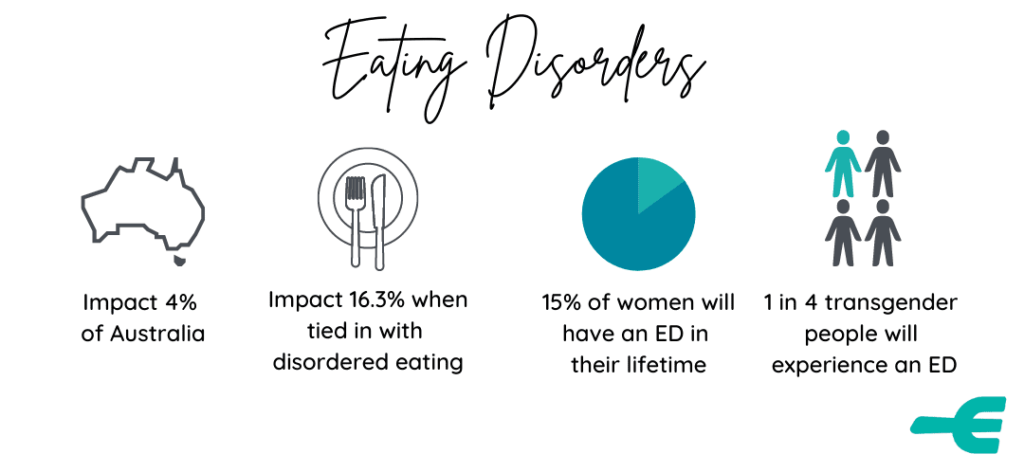
Research indicates that transgender people have a higher level of eating disorders (Witcomb et.al., 2015), with up to 23% of transgender people having a current or previous eating disorder. So we know this isn’t just a woman’s issue, but is strongly linked with body dissatisfaction.
Moving on from eating disorders, we have the impact of postnatal depression (PND). Around one in ten mothers experience postnatal depression, yet it’s rarely spoken about. This lack of discussion and awareness contributes to the stigma which can result in further feelings of shame for mothers.
(Postnatal depression (PND). Postnatal depression (PND) – Better Health Channel. Available at: https://www.betterhealth.vic.gov.au/health/healthyliving/postnatal-depression-pnd#factors-contributing-to-postnatal-depression)
We don’t know the exact cause of PND but having a baby is a huge change in a person’s life. There are physical, emotion, and social changes that occur in those days and weeks post birth. Change is challenging to adapt to, and a lack of support can amplify the negative thoughts that can arise after having a baby.
The Physical Health of Women
It would be amiss of us to talk about women’s health, and not cover the most obvious area – physical.
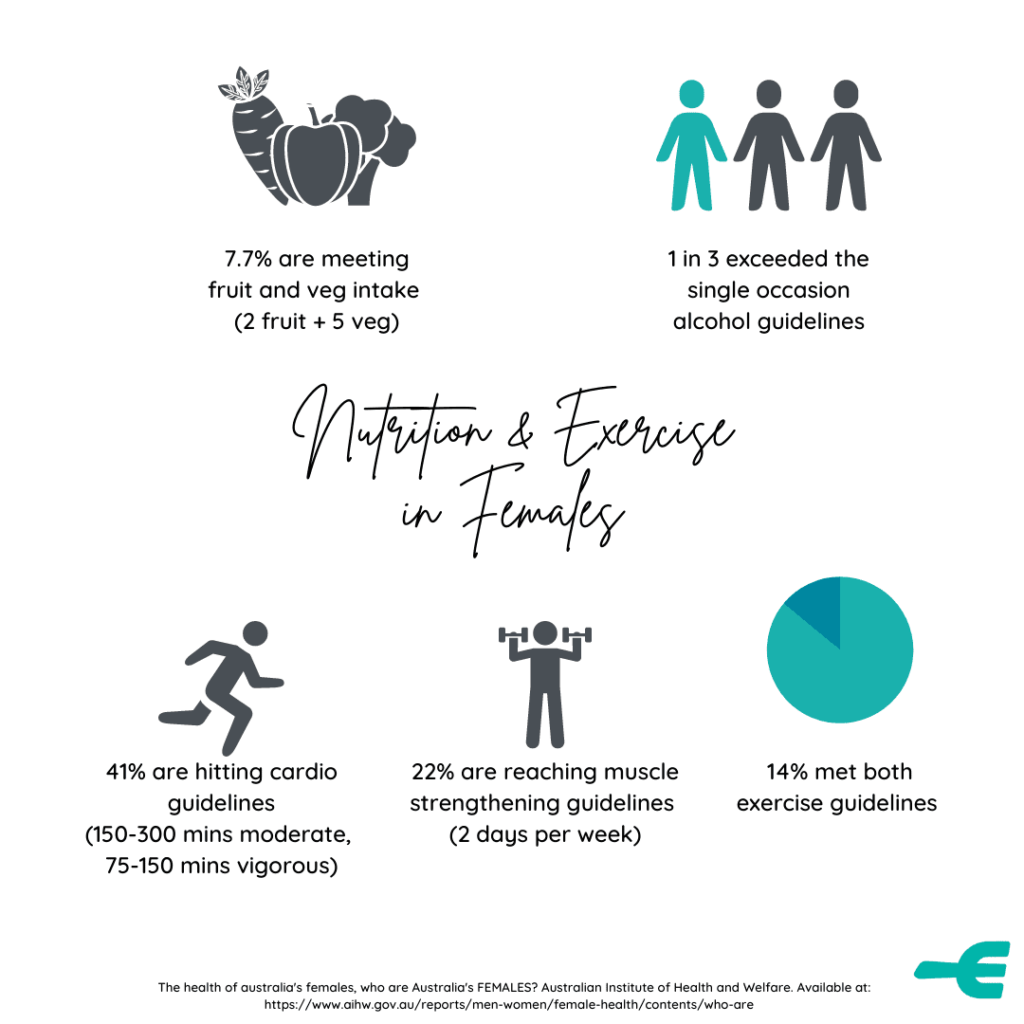
Yes, only 7.7% of women eat the recommended 2 fruit and 5 vegetables daily. But is there access to these foods? Do they have enough money to buy them? Do they know how to cook and prepare them? Are the fruit and vegetables familiar and safe to them?
It’s not as simple as just ‘Eat more fruit and vegetables!’ We have to look at WHY they might not be eating them in the first place.
The same logic goes with exercise recommendations. 50% of girls quit sport by the age of 17 (Suncorp, 2019). We don’t know exactly why. Understanding why this is the case, will help us reframe sport to teenagers. Then we might be more likely to have more females hitting those recommended physical activity targets.
Women in the Workplace
The dynamics of a family have changed over the years. But we’re still seeing very traditional values. Wife has children, takes time off work, maternity leave, may even choose to be a stay-at-home mum for a variety of reasons.
There is absolutely nothing wrong with this rhetoric. What I do find a problem with is how this can set up a woman’s future. When on maternity leave or being a stay-at-home mum, you’re not being paid super. You’re also not building your career or experience for that period of time, which can be a factor in why women aren’t being promoted into those higher ranking jobs.
So, in the unfortunate event where you might split from your husband down the track, or even if you just choose to keep your finances separate to a point, you’ll be worse off. Women are already in lower paying jobs, earning on average 14.2% less than men.
(ABS (2021), Average Weekly Earnings, May 2021, Table 10 A and Table 10 D, https://www.abs.gov.au/statistics/labour/earnings-and-work-hours/average-weekly-earnings-australia/latest-release#data-download)
This discrepancy adds fuel to the fire, stretching the divide between financial freedom and women.
Women are less likely to be in the top positions of a company. Their views often being devalued and the normal assumption is that women are overly emotional and irrational.
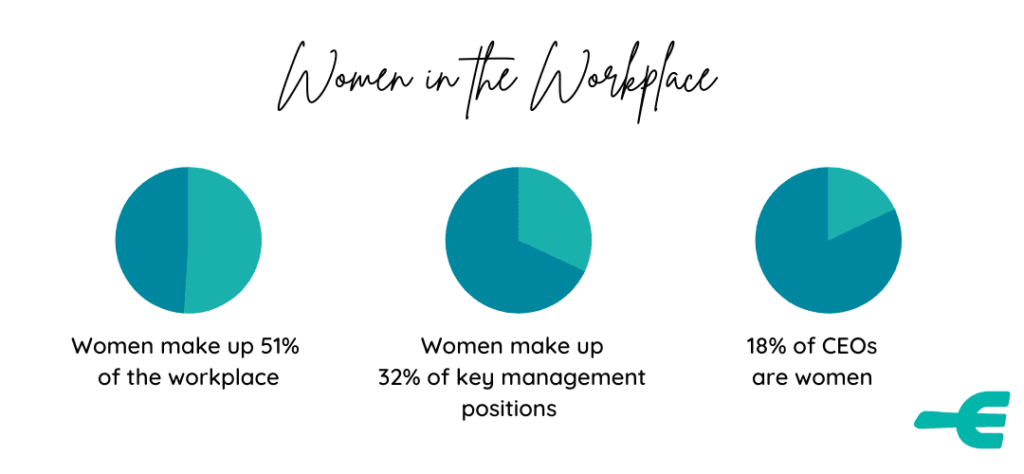
Women in Home and Social Context
Trigger Warning: This section does discuss women and violence/sexual abuse. If this is triggering for you, you can scroll past to the next section.
Here we are going to have a quick look at support systems.
In general, women are known to have strong support networks within their friends and family. They usually have larger and more varied friendship and support groups. This can reduce loneliness, and improve rates of mental health in some circumstances.
Women are more likely to take the carer/caring role in the household. It’s estimated that women spend 64% of their total workday performing unpaid care work. Women are also spending 3 times more time each day caring for children than men are.
Unfortunately, women are subject to some horrendous violent situations. Over half of women have experienced sexual harassment over their lifetime. Approximately one third of women have endured physical violence since the age of 15. These numbers are just staggering, and show how vulnerable our women really are.
(The health of australia’s females, who are Australia’s FEMALES? Australian Institute of Health and Welfare. Available at: https://www.aihw.gov.au/reports/men-women/female-health/contents/who-are)
So, What Now?
As health professionals it is our job to support and empower our female clients but also come from a place of understanding and empathy. Change is difficult, especially cultural change. If you want to learn more about how to support women & improve the health status of women our courses offered in our Only pack the Essentials Course is a great place to start. Covering all things behavioural change, meeting a client where they are at icluding understanding trauma informed care and also an introduction into eating disorders and disordered eating. Sign up here today.
This week (5-11th September) marks Women’s Health week and we wanted to cover some pretty big topics on the matter. Women’s health is quite broad. Are we talking about periods? Fertility? Weight loss? Eating disorders? Menopause? Cis-Het females? Trans women?
None of the above specifically, but all the above in general. We’re going to talk about holistic health. It kills me to use the term ‘holistic health’ because it’s such a buzzword on Instagram at the minute. But I really do mean health – as a whole.

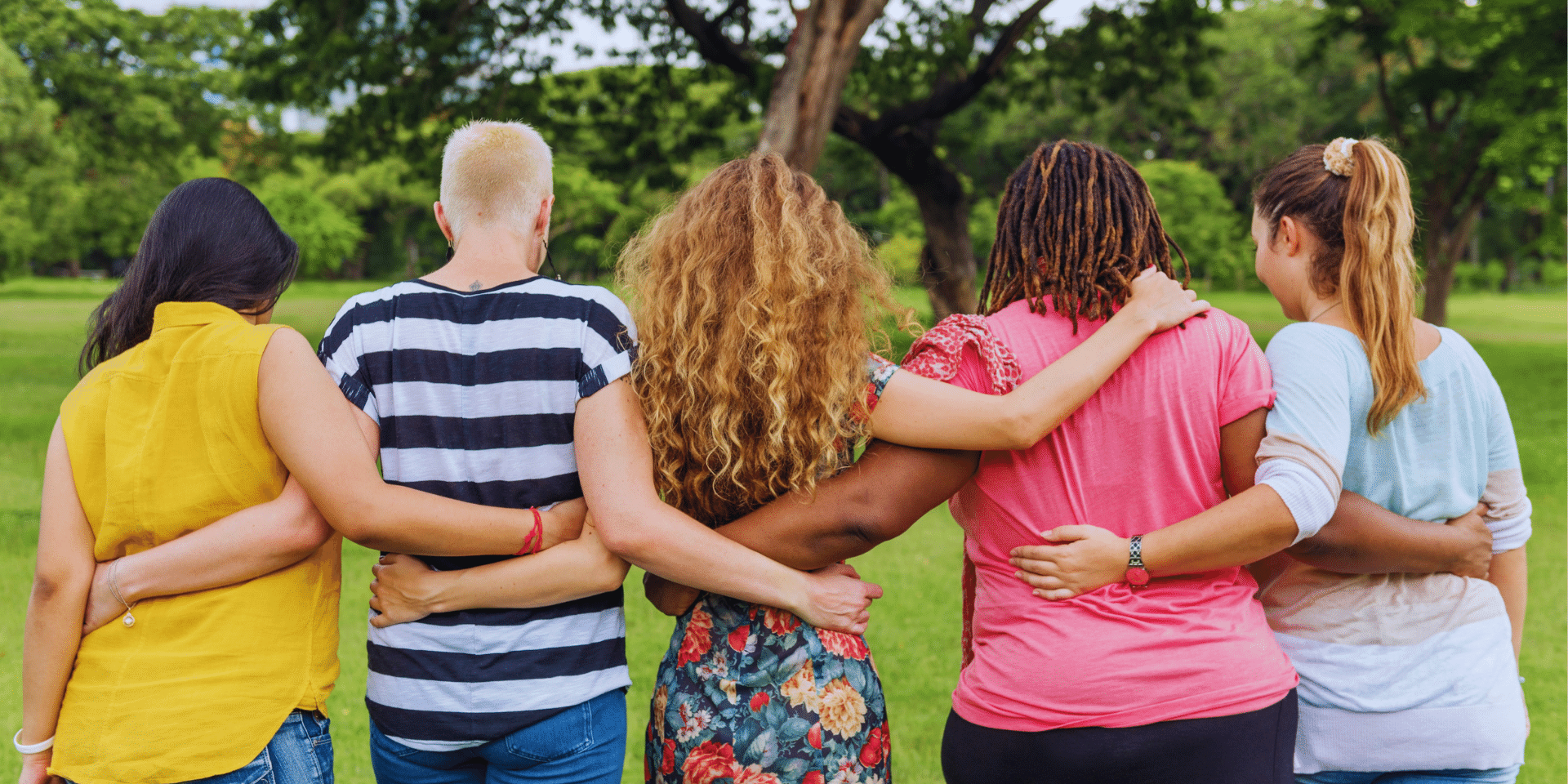
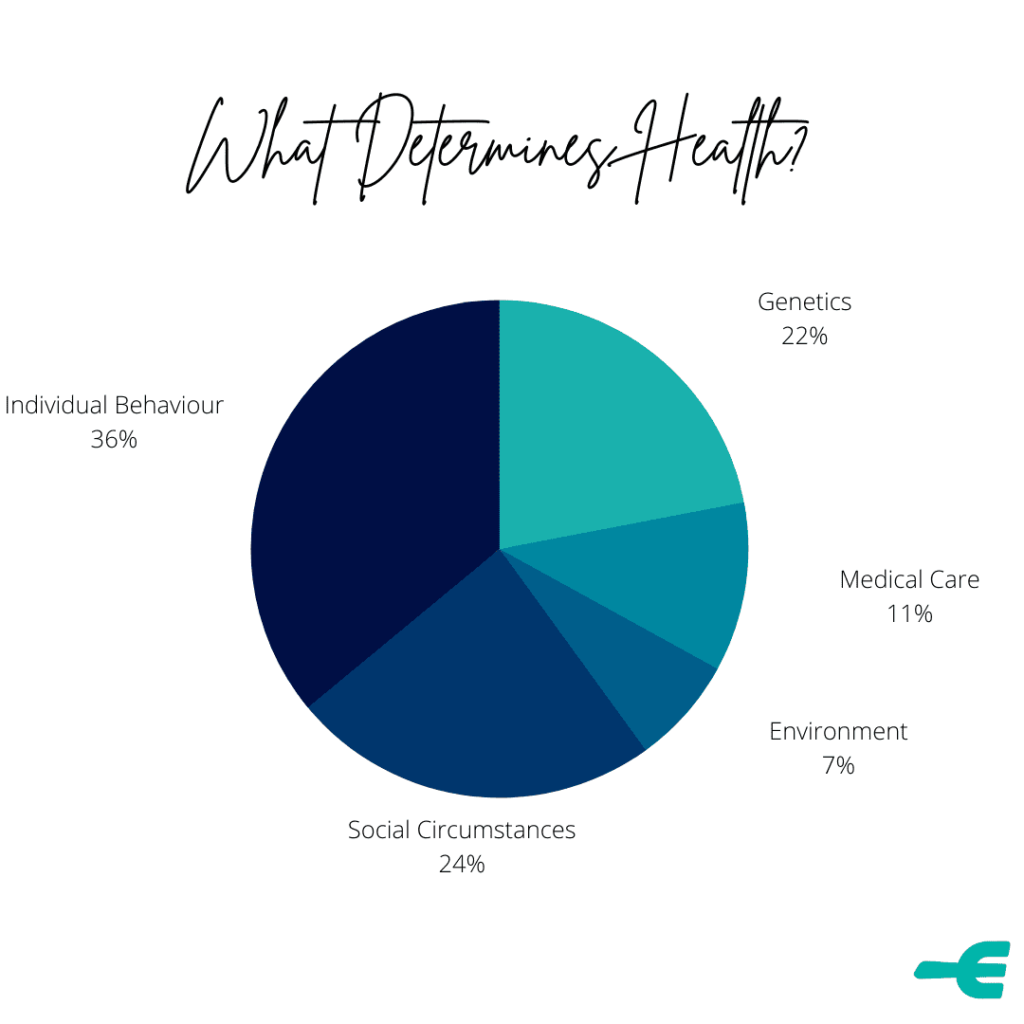
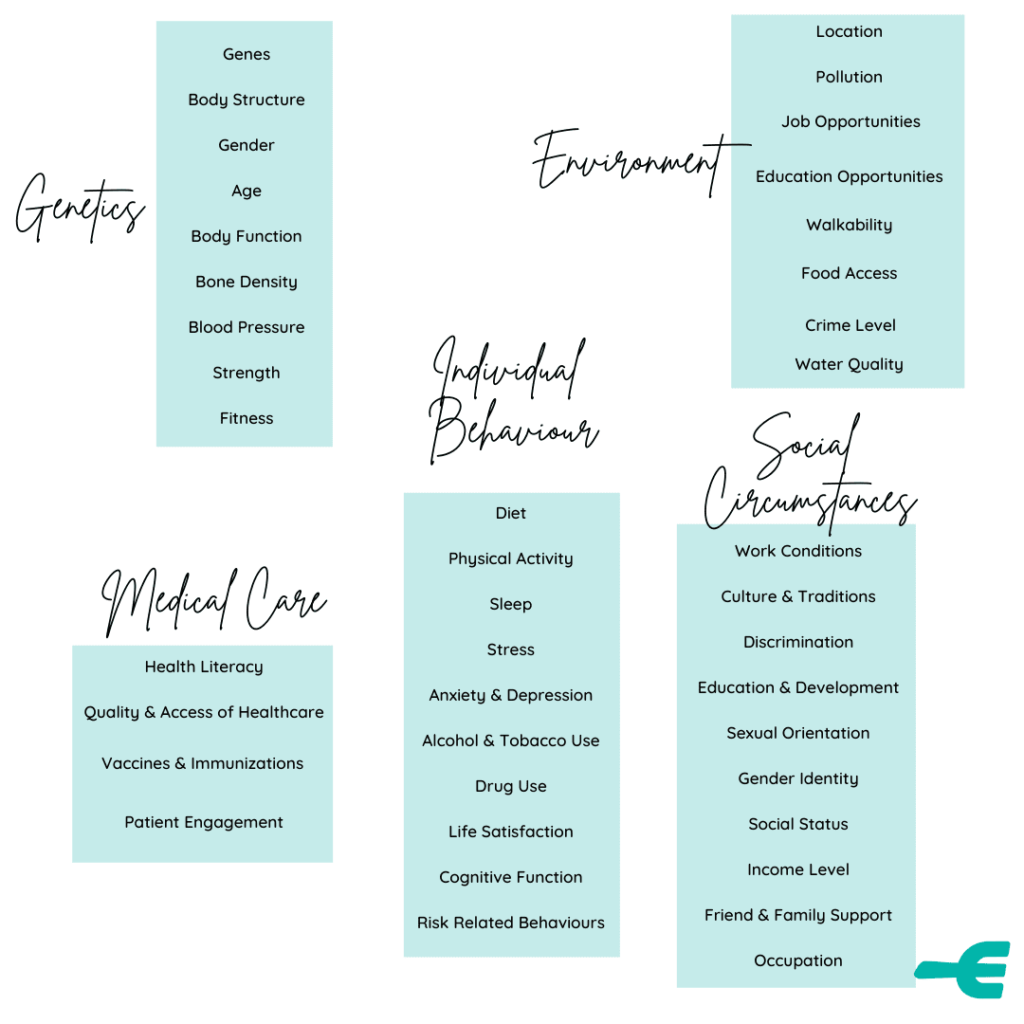 Who is a Woman?
Who is a Woman?